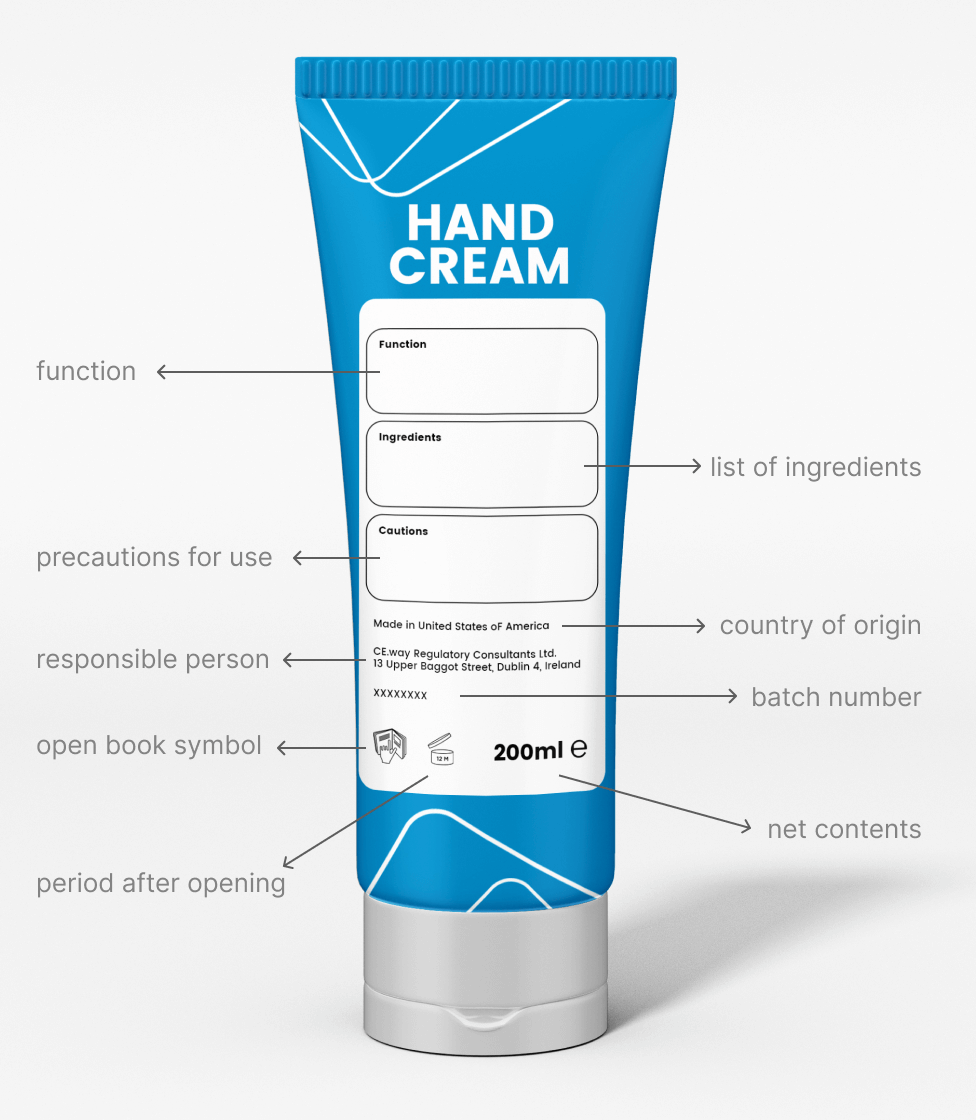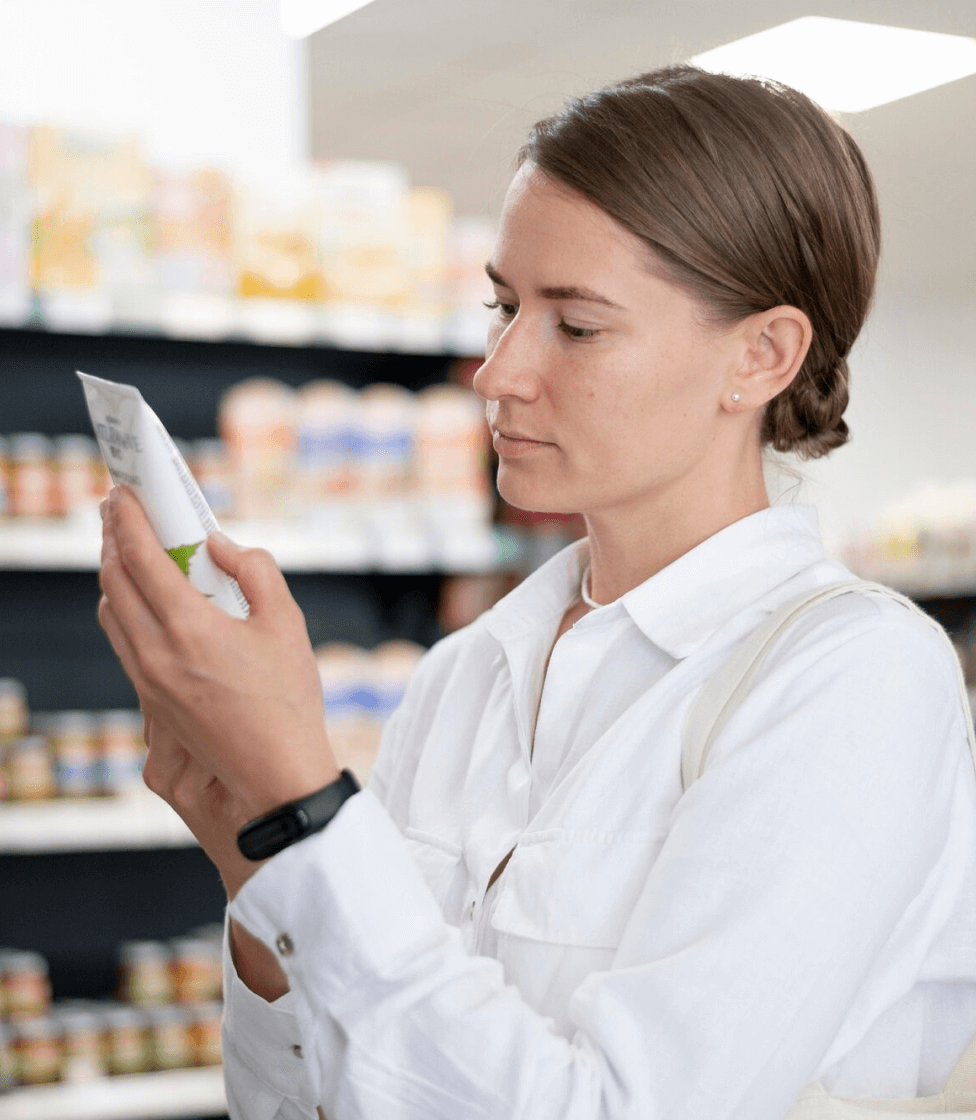According to the regulation, the container and the outer packaging of cosmetic products have to bear the following information in indelible, easily legible and visible lettering:
The name and address of the responsible person
The country of origin if the product is imported from countries outside of the EU/UK
Nominal content of the product at the time of packaging, given by weight or volume
Date of minimum durability or period after opening
Precautions for use
Batch number of manufacture or the reference for identifying the cosmetic product
Function of the cosmetic product, unless it's clear from its presentation
List of ingredients (which may be indicated on the outer packaging alone)
Some of these elements may also be mentioned on an enclosed or attached leaflet, label, tape, tag or card if it's impossible to list them on the labels. In that case an open book symbol should be placed on the label, which indicates that some information about the product can be found elsewhere.
The open book symbol indicates that some information about the product can be found elsewhere.
The EU consists of 27 different countries and the cosmetic labelling laws require certain information on the labels to be translated into different languages. Some countries have more than one official language, which further complicates things and requires that certain information appear in more than one language on the labels.




